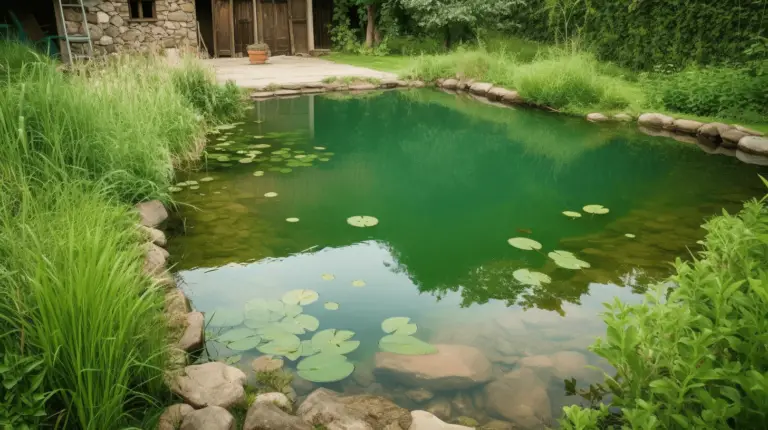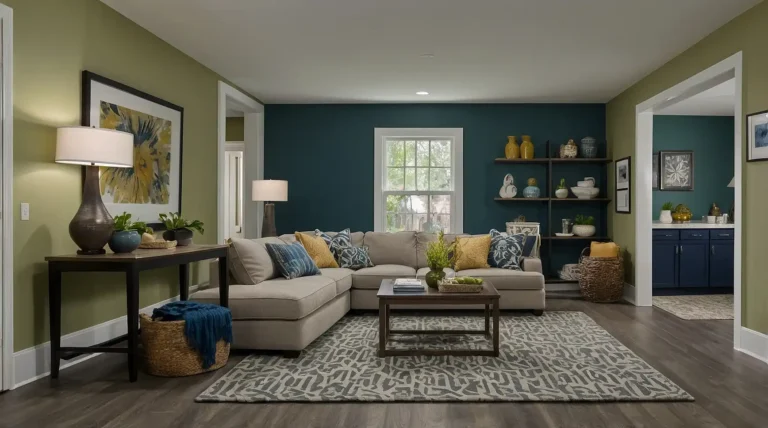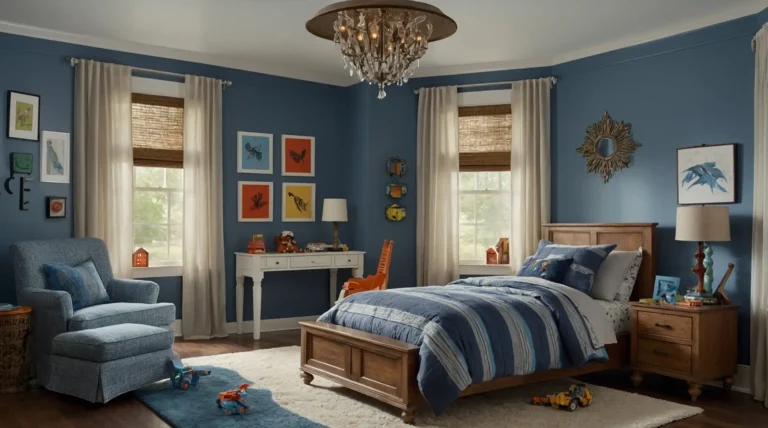27 Innovative Solarpunk House Ideas That Blend Nature With Technology
Welcome to the world of solarpunk living, where sustainability meets aesthetic beauty.
Imagine homes that not only reduce your carbon footprint but also inspire a sense of wonder and harmony with nature.
As climate consciousness grows, more homeowners are embracing these forward-thinking designs that combine renewable energy, natural elements, and smart technology.
Ready to transform your living space into an eco-friendly haven?
Let’s explore 27 solarpunk ideas that will revolutionize how you think about home design.
1: Living Green Roofs

Transform your rooftop into a lush garden that insulates your home naturally while supporting local biodiversity.
These oxygen-producing canopies reduce urban heat and manage stormwater runoff effectively.
Plant native species to attract local pollinators and create your own rooftop ecosystem.
The soil layer acts as natural insulation, keeping your home cooler in summer and warmer in winter.
2: Transparent Solar Windows

Replace conventional windows with transparent solar glass that generates electricity while allowing natural light to flood your living spaces.
These innovative panels serve a dual purpose of energy production and maintaining connection with the outdoors.
The technology has improved dramatically, with newer models offering clarity nearly indistinguishable from regular glass.
You’ll reduce your reliance on grid electricity without sacrificing views or natural lighting.
3: Rainwater Harvesting Systems
Capture precipitation from your roof and store it in attractive cisterns or underground tanks for garden irrigation, toilet flushing, and other non-potable uses.
Modern systems include filtration components that can make rainwater suitable for multiple household purposes.
Decorative rain chains can replace downspouts, turning water collection into a visual feature. You’ll reduce water bills while preserving this precious resource.
4: Indoor Food Forests
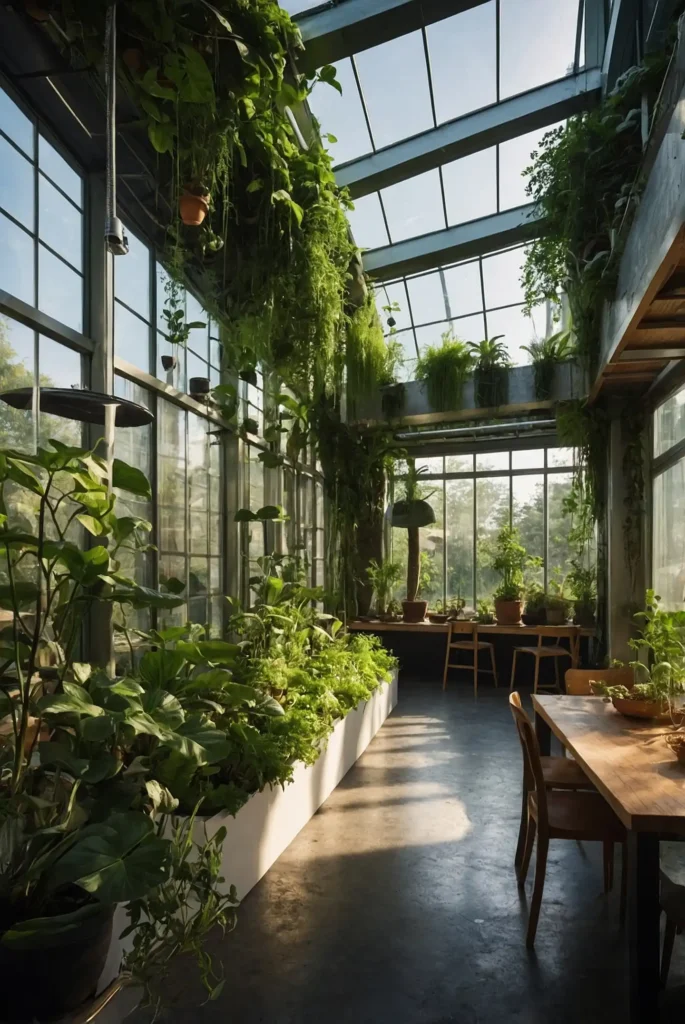
Create multi-layered indoor growing spaces that mimic natural forest systems while producing fruits, vegetables, and herbs year-round.
These productive ecosystems bring nature inside while providing fresh food steps from your kitchen.
Use vertical space efficiently with hanging planters and wall-mounted systems.
The plants improve air quality and humidity levels while connecting you to natural growing cycles regardless of outdoor conditions.
5: Biomimetic Architecture

Design your home to mimic natural structures and systems found in nature.
Think ventilation systems inspired by termite mounds or structural supports that reflect the efficiency of tree branches.
These designs are not just visually striking but incredibly efficient.
You’ll find that biomimetic homes often require less material while providing greater structural integrity and natural climate control.
6: Hemp and Mycelium Building Materials
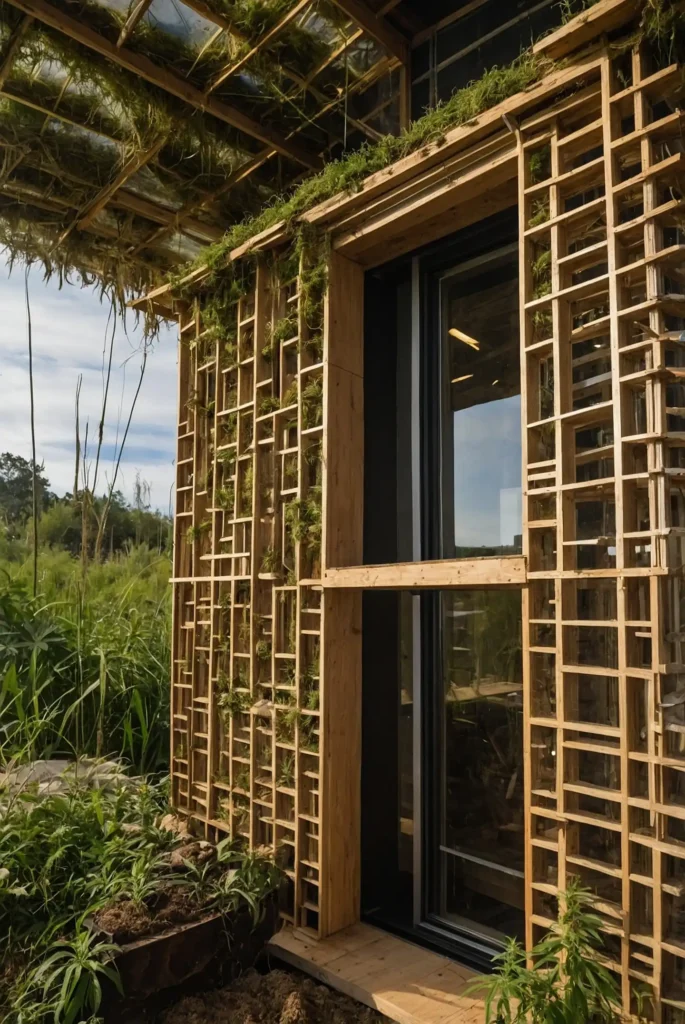
Construct walls and insulation using sustainable, carbon-negative materials like hemp concrete (hempcrete) or mycelium (fungal) composites.
These biological building blocks sequester carbon throughout their lifecycle.
Both materials offer excellent insulation properties and natural resistance to mold and pests.
You’ll create healthier indoor air quality while using materials that can be grown rather than mined or manufactured.
7: Algae Bioreactors as Living Curtains
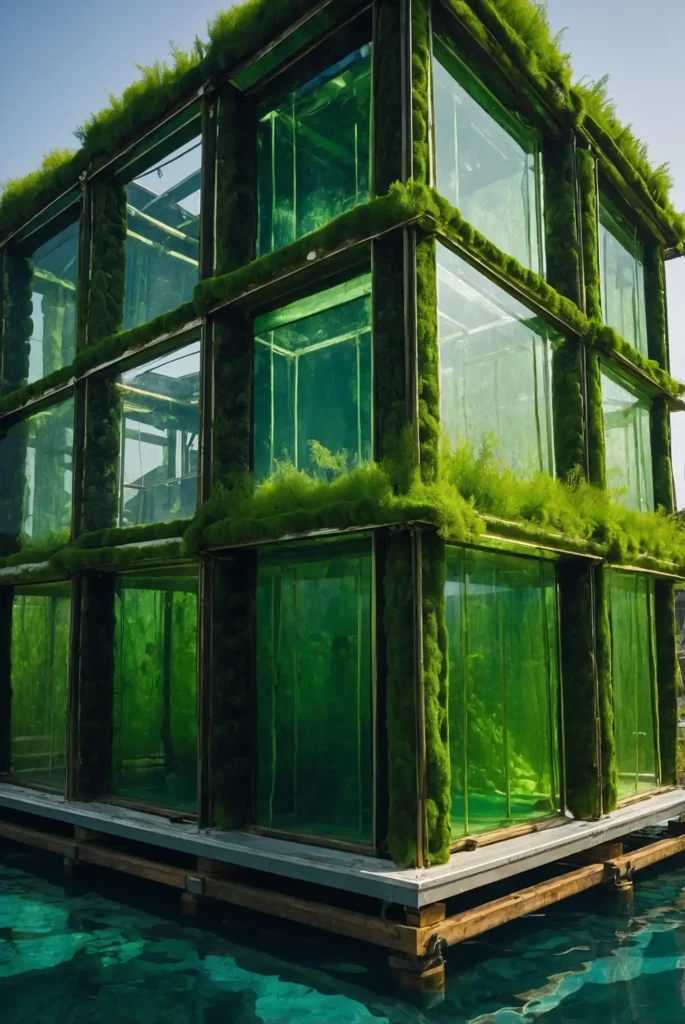
Install transparent tubes filled with algae that absorb CO2, produce oxygen, and generate biomass while serving as beautiful, living window coverings.
These photosynthetic displays change color throughout the day as the algae respond to light conditions.
The harvested algae can later be used as garden fertilizer.
You’ll enjoy the dynamic, living art that actively improves your home’s air quality and provides a conversation starter for guests.
8: Passive Solar Design
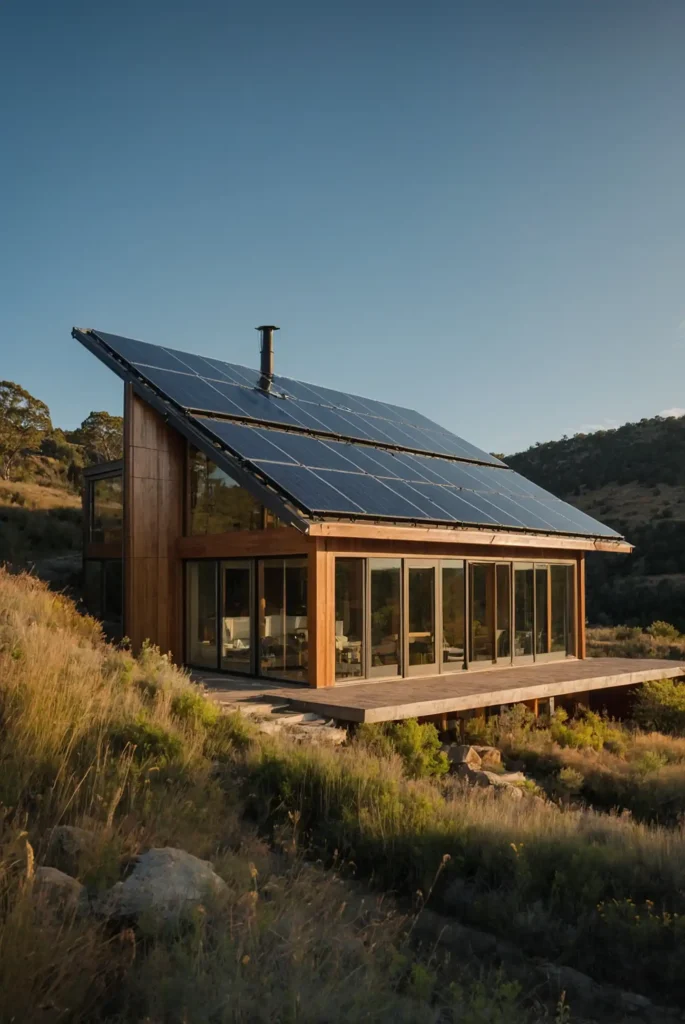
Orient your home and design window placement to maximize winter sun exposure while minimizing summer heat gain.
Thermal mass elements like concrete floors or water walls store heat energy and release it slowly.
This ancient design principle requires no technology yet dramatically reduces energy needs.
You’ll enjoy naturally comfortable temperatures throughout the year with minimal supplemental heating or cooling.
9: Community Energy Microgrids

Connect your home to neighborhood-scale power systems that share renewable energy resources among multiple dwellings.
These resilient networks can operate independently from the main grid during outages.
Community batteries store excess production for evening use or emergencies.
You’ll benefit from shared investment costs while creating energy independence for your entire neighborhood.
10: Water-Recycling Shower Gardens

Direct greywater from your shower to indoor planters that filter and purify the water while growing ornamental plants or even certain edibles.
The filtered water can then be reused for toilet flushing.
These living systems bring greenery into your bathroom while making visible the water cycle.
You’ll reduce water consumption dramatically while creating a spa-like atmosphere in your daily routine.
11: Automated Vertical Gardens
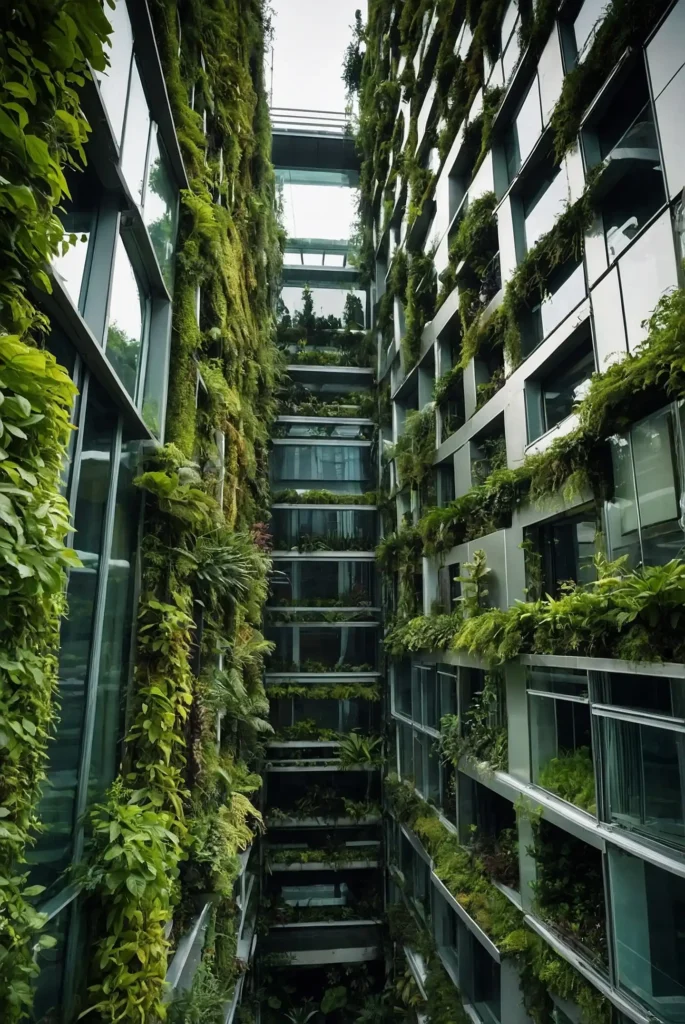
Install smart growing systems on interior or exterior walls that monitor soil moisture, nutrient levels, and light exposure while growing food or ornamental plants.
These space-efficient gardens can be programmed to optimize growing conditions.
App integration allows you to monitor and adjust settings remotely. You’ll maximize growing space in even the smallest homes while creating stunning living walls that improve air quality.
12: Bioluminescent Lighting Paths

Incorporate naturally glowing organisms or synthetic bioluminescent materials to create gentle pathway lighting that requires no electricity.
These magical blue-green glows provide navigation lighting without light pollution.
Modern synthetic options mimic natural bioluminescence without requiring living organisms.
You’ll create an otherworldly atmosphere while eliminating energy use for ambient lighting needs.
13: Bamboo Structural Elements

Replace conventional framing with fast-growing, incredibly strong bamboo structural systems.
This renewable grass reaches harvest maturity in just 3-5 years compared to decades for most timber.
Modern treatment methods have overcome traditional durability concerns.
You’ll build with one of the planet’s most sustainable materials while creating distinctive architectural elements that can be left exposed for visual impact.
14: Wind Chimney Cooling Systems
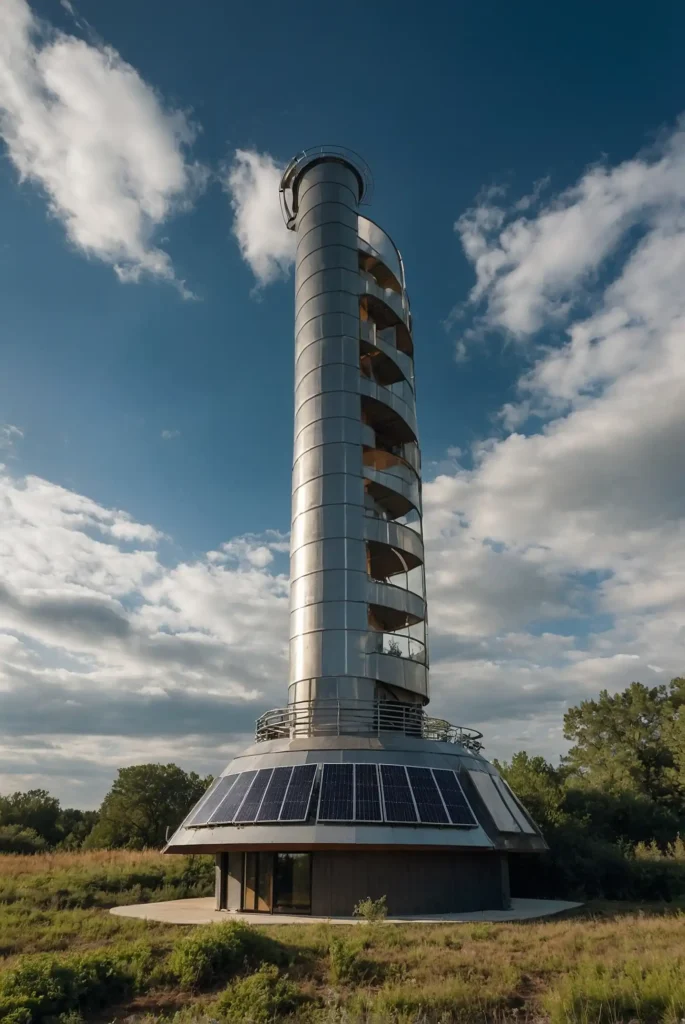
Incorporate passive cooling towers that use temperature differentials to create natural airflow through your home without mechanical assistance.
These ancient desert technologies have been updated for modern homes.
The system works on simple physics principles, drawing hot air upward and out.
You’ll stay comfortable in hot weather without energy-intensive air conditioning systems.
15: Food-Producing Greenhouse Additions

Attach solar-optimized growing spaces that extend your home’s living area while producing food year-round.
These multipurpose rooms capture heat for the main dwelling while creating ideal growing conditions.
Thermal mass elements store daytime heat for overnight release.
You’ll extend growing seasons while creating a sunny retreat space that connects you with natural cycles.
16: Aquaponic Living Walls
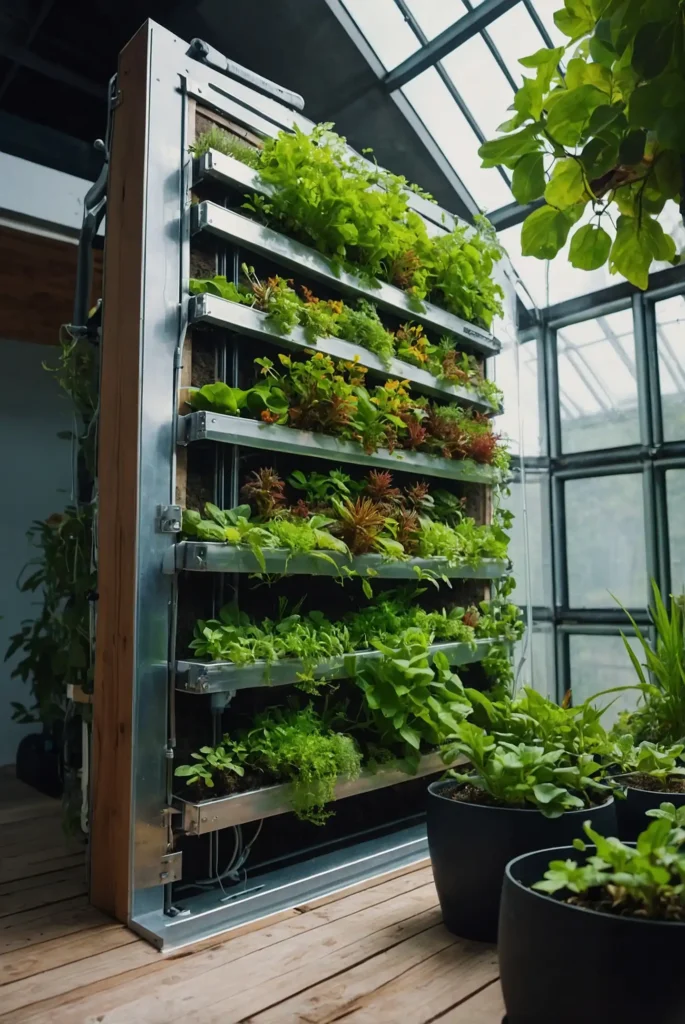
Install integrated systems where fish tanks nourish wall-mounted plants, creating a closed-loop ecosystem that produces both protein and vegetables.
The plants filter water for the fish while the fish provide nutrients for the plants.
These living ecosystems become focal points in any room. You’ll produce food while enjoying the calming presence of water features and lush greenery.
17: Terra Preta Soil Integration
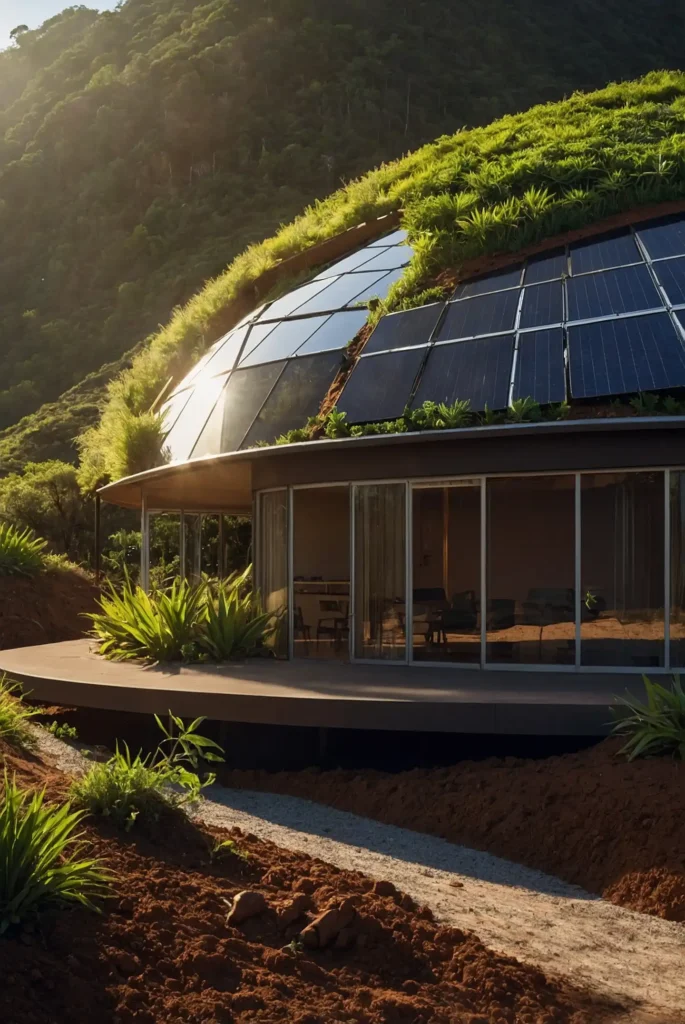
Incorporate ancient Amazonian black earth techniques into your landscaping by mixing biochar with compost to create carbon-sequestering super soil.
This remarkable soil amendment increases fertility while locking carbon away for centuries.
Modern biochar can be made from agricultural waste materials.
You’ll improve plant growth while actively removing carbon from the atmosphere through your gardening practices.
18: Distributed Energy Storage

Install multiple small-scale battery systems throughout your home rather than one central unit, creating resilience through redundancy.
These systems can be optimized for different purposes.
Some batteries handle quick-response needs while others provide long-term storage.
You’ll create an energy system that adapts to various household demands while providing backup for critical systems during outages.
19: Reed Bed Water Filtration
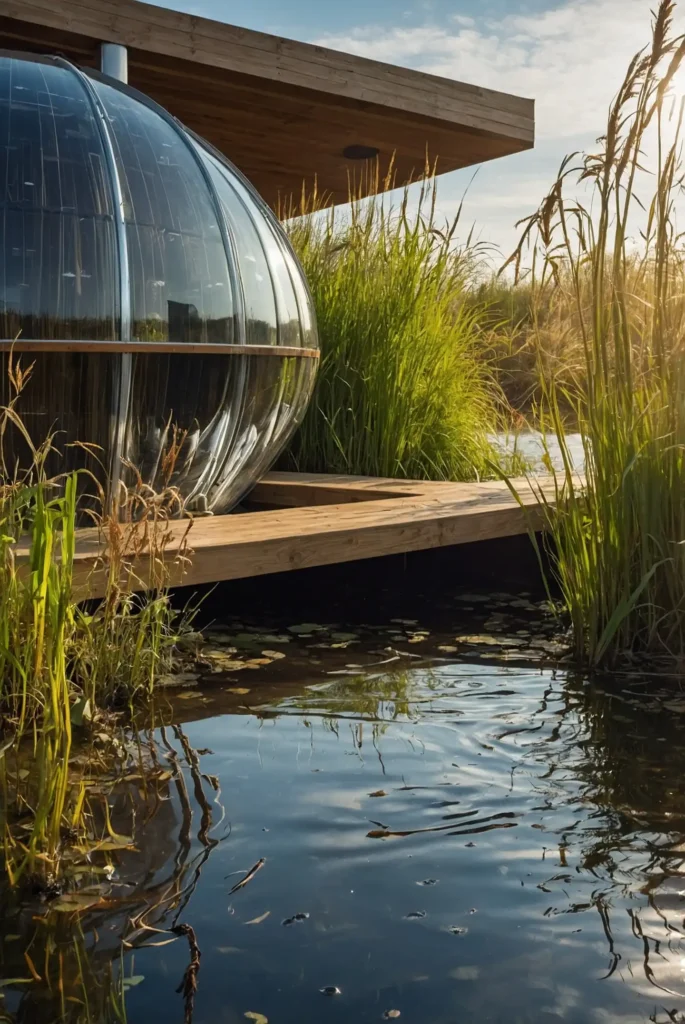
Purify household wastewater through constructed wetlands that process impurities naturally before returning clean water to the environment.
These beautiful planted areas serve as landscape features while performing vital filtering functions.
Different plant species remove various contaminants from the water.
You’ll handle waste sustainably while creating habitat for beneficial insects and amphibians.
20: Micro-Wind Turbine Arrays
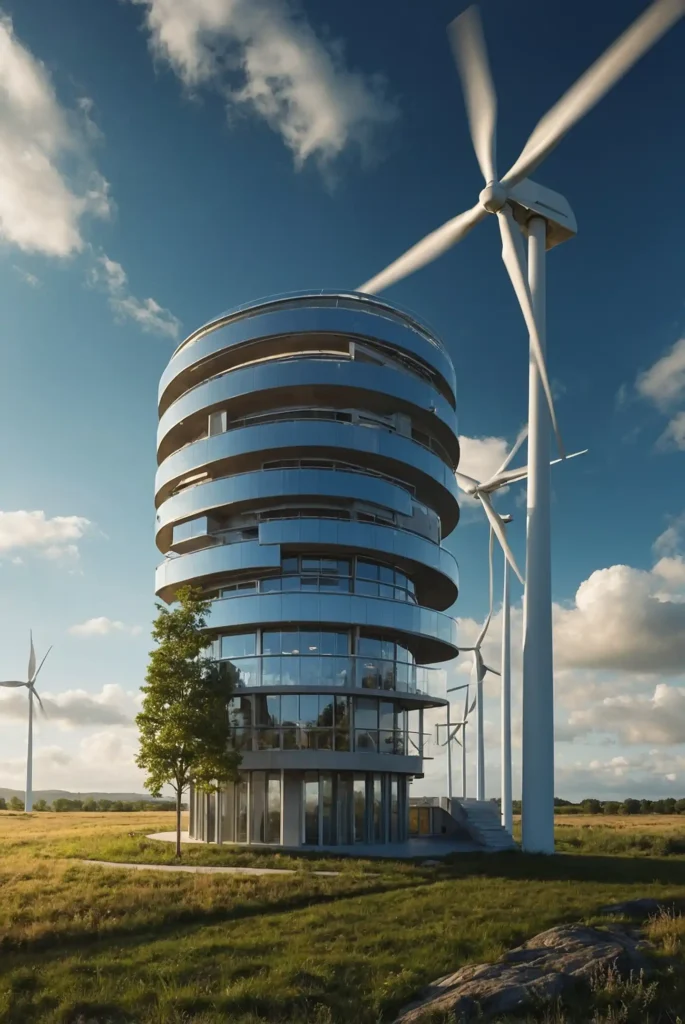
Mount small vertical-axis wind catchers along roof edges or as sculptural elements that generate power even in light breezes.
Unlike large propeller designs, these compact turbines work well in variable urban wind conditions.
The combined output of multiple small units provides reliable power generation.
You’ll harness wind energy even in locations unsuitable for traditional turbines.
21: Earth-Sheltered Design Elements
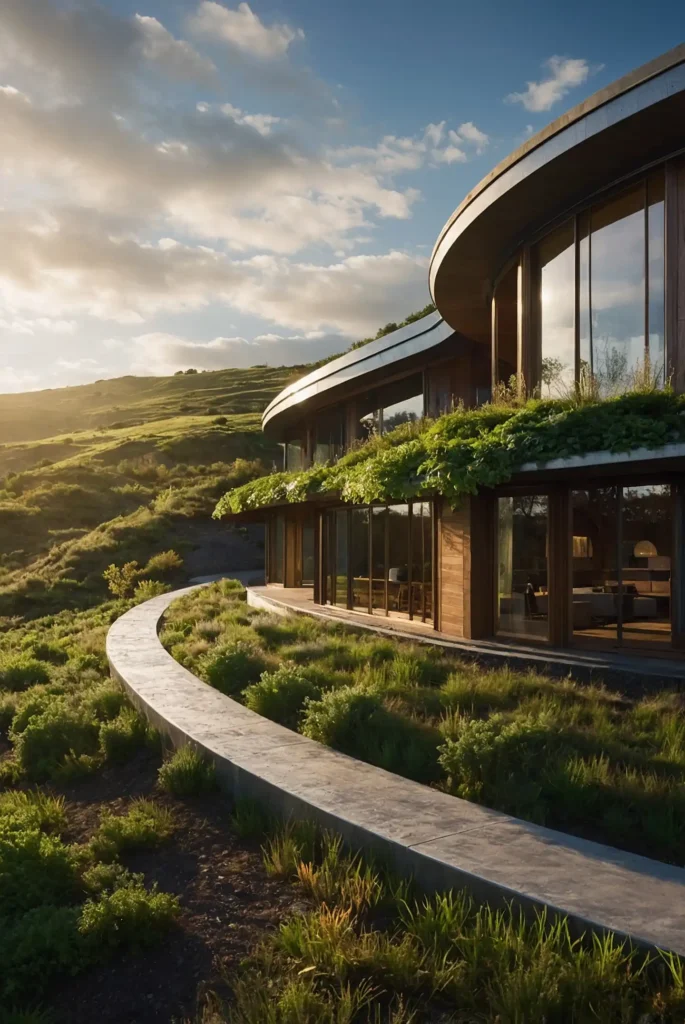
Integrate your home partially into the landscape to utilize the earth’s thermal mass for temperature regulation.
These designs maintain comfortable temperatures year-round with minimal energy input.
Earth-sheltered homes offer superior protection from extreme weather events.
You’ll enjoy nearly soundproof living spaces with dramatically reduced heating and cooling requirements.
22: Home-Scale Biogas Digesters
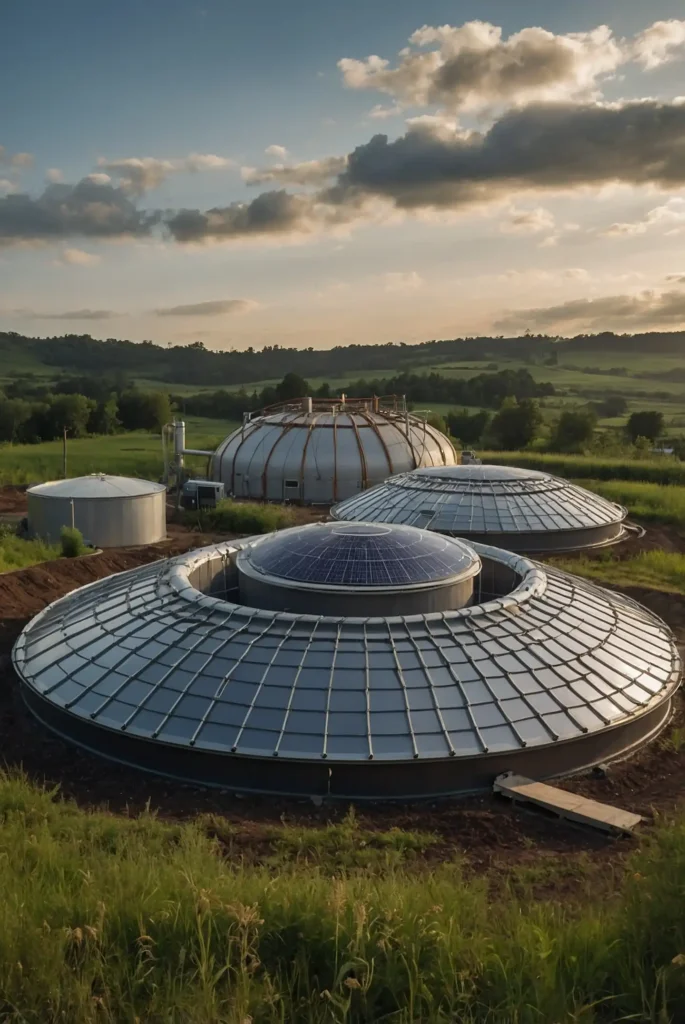
Convert kitchen waste and garden trimmings into methane for cooking or heating through anaerobic digesters that mimic natural decomposition processes.
The resulting gas burns cleanly with no smoke.
The remaining material becomes perfect garden fertilizer.
You’ll close the waste loop while producing free, renewable cooking fuel from materials that would otherwise end up in landfills.
23: Edible Landscaping Throughout

Replace purely ornamental plants with beautiful edibles that provide food while maintaining aesthetic appeal.
Think blueberry bushes instead of boxwood or apple trees instead of purely ornamental varieties.
Strategic planting creates harvests throughout the growing season.
You’ll enjoy fresh produce steps from your door while creating landscapes that nourish both body and soul.
24: Smart Skylights and Light Tubes
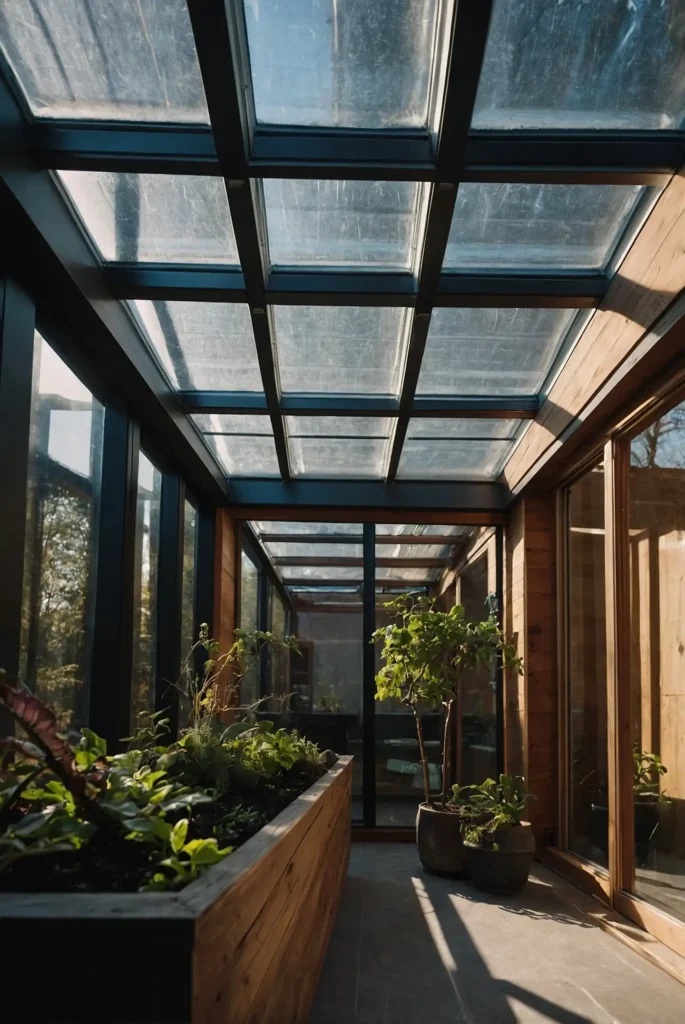
Install automated roof openings that track optimal daylight and ventilation needs throughout the day.
These systems reduce artificial lighting requirements while improving indoor air quality.
Reflective tubes can bring natural light deep into interior spaces.
You’ll minimize electricity use while creating bright, welcoming spaces filled with natural light.
25: Building-Integrated Photovoltaics
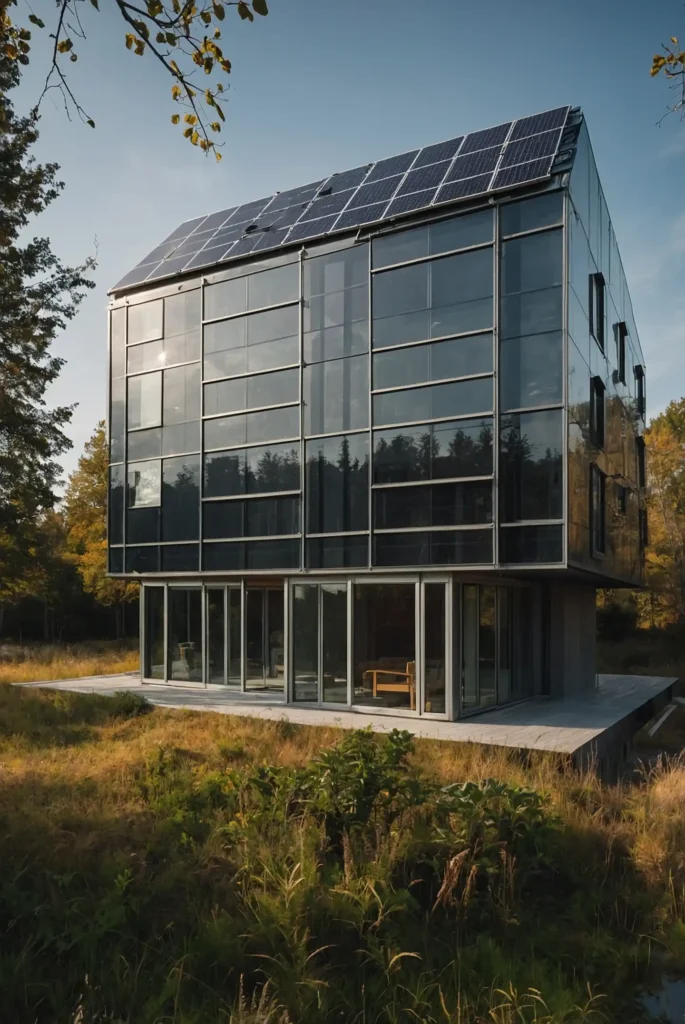
Incorporate solar collection directly into building materials like roof tiles, siding, or even pathways rather than adding separate panel arrays.
These integrated systems maintain aesthetic cohesion while generating power.
Modern options mimic traditional building materials in appearance.
You’ll produce clean energy without sacrificing architectural style or adding visible technology to your home exterior.
26: Natural Cooling Ponds
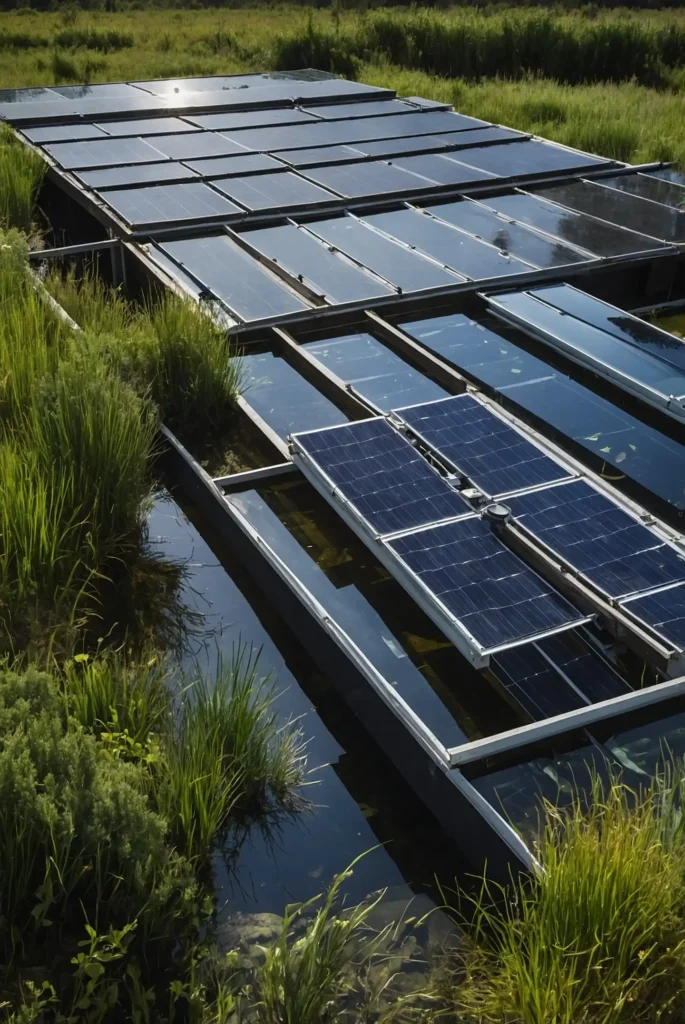
Create water features that provide evaporative cooling for adjacent living spaces while supporting aquatic ecosystems.
Strategic placement allows prevailing breezes to carry cooled air into your home.
These ponds become habitat for local wildlife. You’ll enjoy natural air conditioning while creating beautiful water features that support biodiversity.
27: Communal Workshop Spaces

Designate areas for tool-sharing and collaborative making that reduce individual consumption through shared resources.
These spaces foster community resilience and skill-sharing among neighbors.
Workshop areas can be incorporated into garages or outbuildings.
You’ll gain access to more tools and expertise while strengthening community bonds and reducing individual consumption.
Conclusion
Embracing solarpunk design isn’t just about sustainability—it’s about creating joyful, resilient spaces that connect you with nature and community.
Start with one idea and watch how it transforms not just your home, but your relationship with the planet.


